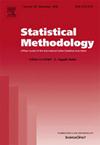Distribution-free tolerance intervals with nomination samples: Applications to mercury contamination in fish
Abstract
Tolerance intervals are enclosure intervals which will cover a fixed portion of the population distribution with a specified confidence. These intervals are widely used in clinical, environmental, biological and industrial applications, including quality control and environmental monitoring, to help determine limits for detection or assessment monitoring. In many of these applications the measurement of the variable of interest is costly and/or destructive but a small number of sampling units can be ranked easily by using expert-opinion knowledge or inexpensive and easily obtained measurements from these units. In this paper, we construct tolerance intervals based on the expensive measurements that are obtained using randomized nomination sampling (RNS) with the help of inexpensive auxiliary information. We study the performance of our proposed RNS-based tolerance intervals based on the corresponding coverage probabilities and the necessary sample size for their existence with those based on simple random sampling (SRS). The efficiency of the constructed RNS-based tolerance intervals compared to their SRS counterparts is discussed. We investigate the performance of RNS-based tolerance intervals for different values of the design parameters and various population shapes. We find the values of the design parameters which improve RNS over SRS. The RNS design in presence of ranking error is discussed and a new method for estimating ranking error probabilities is proposed. Theoretical results are augmented with numerical evaluations and a case study based on a fish mercury level dataset.

 求助内容:
求助内容: 应助结果提醒方式:
应助结果提醒方式:


